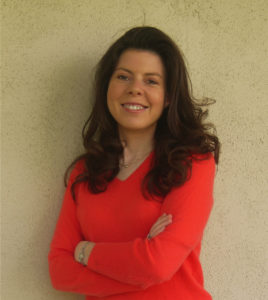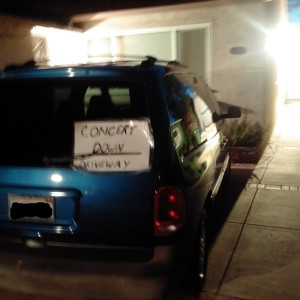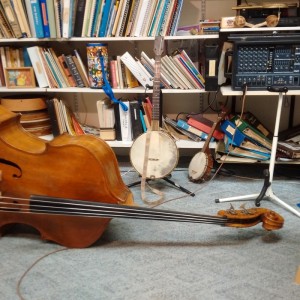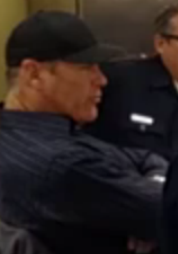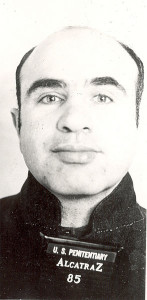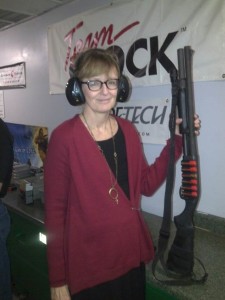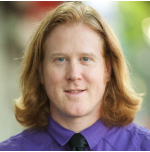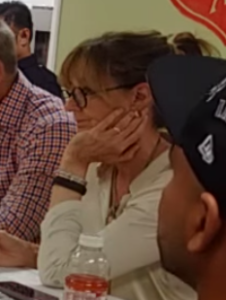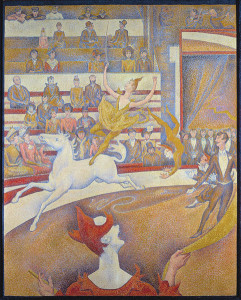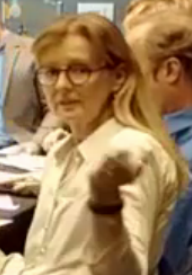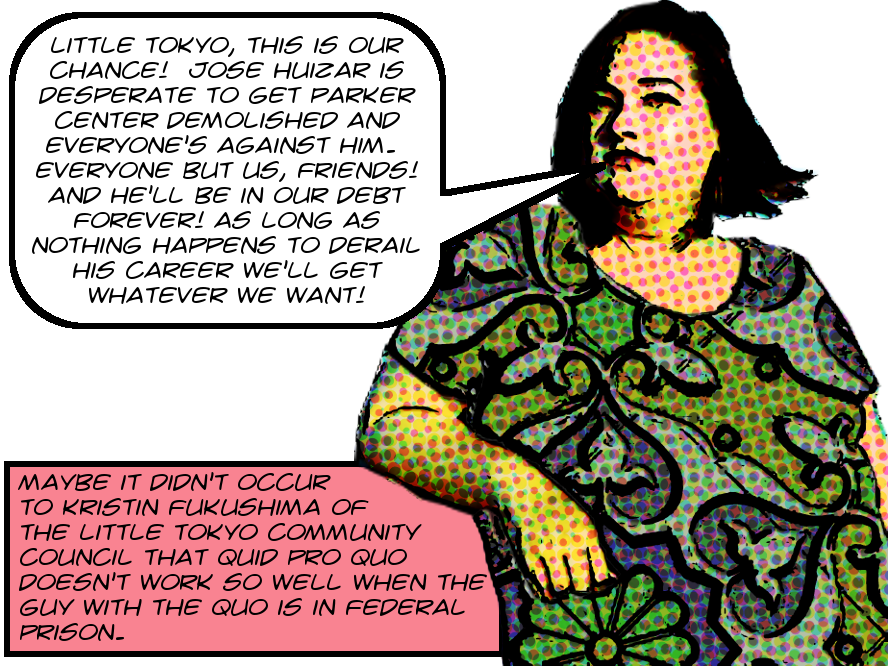
To get some context for the events discussed herein, take a look at this excellent preservation-minded timeline.
In late 2016 the erstwhile LAPD headquarters known as Parker Center was yet again threatened with demolition.1 CD14 repster José Huizar made some pretty noises about preserving it, but really, there’s no money in that for anyone, and by January of 2017, when a crucial series of hearings began, he had thrown the full weight of his councilmanic power behind the wrecking ball.
And even though the decision on Parker Center was strictly up to the City Council, which can unilaterally override every City commission or board, and that means that the decision was strictly up to Huizar alone,2 for whatever reason Huizar apparently was reluctant to tear the building down based on nothing more than his raw desire and power to do so.
It’s hard to say why this was the case. Possibly because the Cultural Heritage Commission had taken the fairly unprecedented step of recommending Historic-Cultural Monument status on their own motion, or maybe because the mostly reliably subservient Los Angeles Times had editorialized against demolition, or possibly because phone calls to his office were disproportionately in favor of not tearing the damn building down.
In fact, according to Kristin Fukushima of the Little Tokyo Community Council quoting an unnamed Huizar staffer, CD14 had “gotten like 20 calls this am telling us to preserve it and none to demo it. Also extremely expecting like 40 ppl tomorrow to show up supporting preservation.” In a city with a functioning representative democracy we might at this point expect Huizar to change his position given that no one seemed to support him.3 But this is Los Angeles, friends, which is why instead of changing his position he did what Councilmembers always do when faced with this dilemma.
That is, he ordered his staff to go out and gin up some supporters to come give favorable comment at some meetings in favor of his already-determined position. Comments from the public in favor of whatever a given CM has already decided to do are pearls of great price at 200 N. Spring Street, the preferred medium of exchange, the Fort Knox gold that backs the currency in which political capital is measured.4 Such comments, along with letters to council files, and similar things, are collectively known as community buy-in. A Los Angeles City Councilmember can generally do whatever they want to do, but with community buy-in they can do it with impunity.5
So Huizar’s aides set out to buy some buy-in. They hit up people from business improvement districts and like-minded nonprofits, e.g. the Little Tokyo BID, the Downtown Center BID, the Little Tokyo Service Center, and the Little Tokyo Community Council. And these paid commenters6 showed up in force and did what they were expected to do. And I’ve obtained dozens of emails showing the coordination,7 the use of Gmail addresses by at least one Huizar staffer, the unexplained participation of Gil Cedillo’s planning deputy Gerald Gubatan, and the expected quid pro quo in the form of Huizar’s anticipated support for various Little-Tokyo-centric pet projects. Turn the page for links to and transcriptions of selections from these emails, arranged into an epistolary narrative!
Continue reading How José Huizar Was Desperate In 2017 — Gil Cedillo Too — For Anyone — Anyone At All — To Support Demolishing Parker Center Cause Everyone — Like Everyone! — Wanted To Preserve It — So Huizar Flunkies Megan Teramoto And Ari Simon — Who Used A Secret Email Address By The Way — And Cedillo Flunky Gerald Gubatan — Ginned Up Support From A Bunch Of Little Tokyo Business And Property Owners — Coached Them In How To Comment — And The Little Tokyo-Ites Did It To Gain Huizar’s Support For Their Favored Projects — And That Is How Community Buy-In Is Bought And Sold At 200 N. Spring Street


